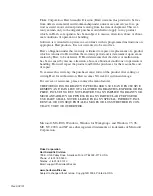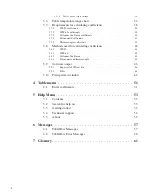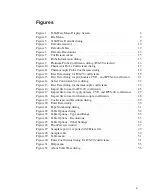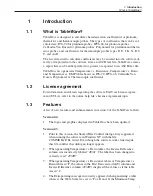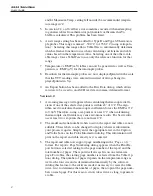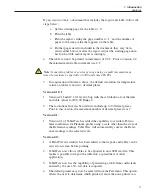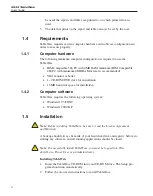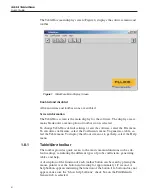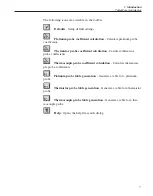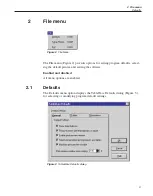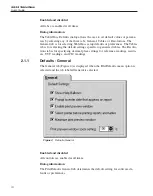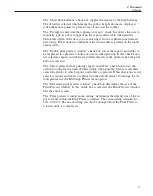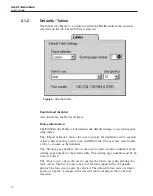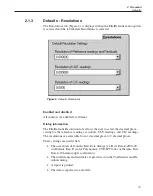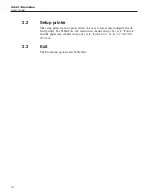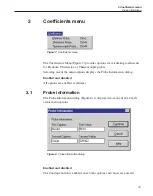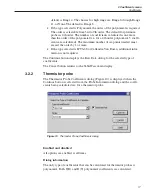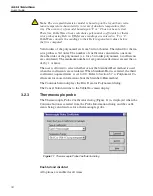
and/or Maximum Temp. setting fell outside the recommended tempera-
ture range in °C.
5.
In version 2.2, an Overflow error sometimes occurred when attempting
to generate tables from thermistor polynomial coefficients that Ta-
ble
Ware
calculated. This problem has been fixed.
6.
A new range setting has been added for Type R and Type S Thermocou-
ple probes. This range is named “-50.0°C to 1768.1°C (using extrapola-
tion)”. Selecting this range allows Table
Ware
to automatically determine
which reference function to use when calculating coefficients and table
values based on the temperature value. Selecting one of the other avail-
able ranges forces Table
Ware
to use only the reference function for that
range.
7.
Temperature vs. EMF (mV) tables can now be generated as well as Tem-
perature vs. EMF (
μ
V) for thermocouple probes.
8.
Residuals for thermocouple probes are now displayed/printed in the scale
that the UUT readings were entered in instead of always being dis-
played/printed in V
μ
.
9.
An Export button has been added to the Raw Data dialog, which allows
raw data to be saved to an ASCII text file in comma, delimited format.
Version 2.2:
1.
A warning message will appear when calculating thermocouple coeffi-
cients if one of the selected set-points is within ±5° of 0°C. The algo-
rithm used to calculate thermocouple coefficients forces the EMF at 0°C
to 0.0µV. Therefore, using a set-point at or near 0°C when calculating
thermocouple coefficients may cause erroneous results. For best results,
use at least two set-points that are not near 0°C.
2.
The model and serial number labels used on the report and table are now
editable. These labels can be changed to display whatever information
your process requires. Simply enter the appropriate text in the Caption
and Value boxes on the Probe Information dialog. This information will
print on the report and table exactly as it is entered.
3.
The report and table now support page numbering in the “Page
x
of
y
”
format. For reports, Page Numbering dialog appears when the Print Re-
port button is selected asking for the page number of the report and the
total number of pages. The report itself always fits on one letter-size
page. For tables, the starting page number is selected from the Table Op-
tions dialog. The number of pages depends on the temperature range as
well as the font size and is determined automatically by the software.
Adding this feature to the software made it necessary to create the table
twice: first to determine the number of pages, then to print the page num-
bers on each page. For this reason, it now takes twice as long to generate
a table.
9933 TableWare
User’s Guide
2


